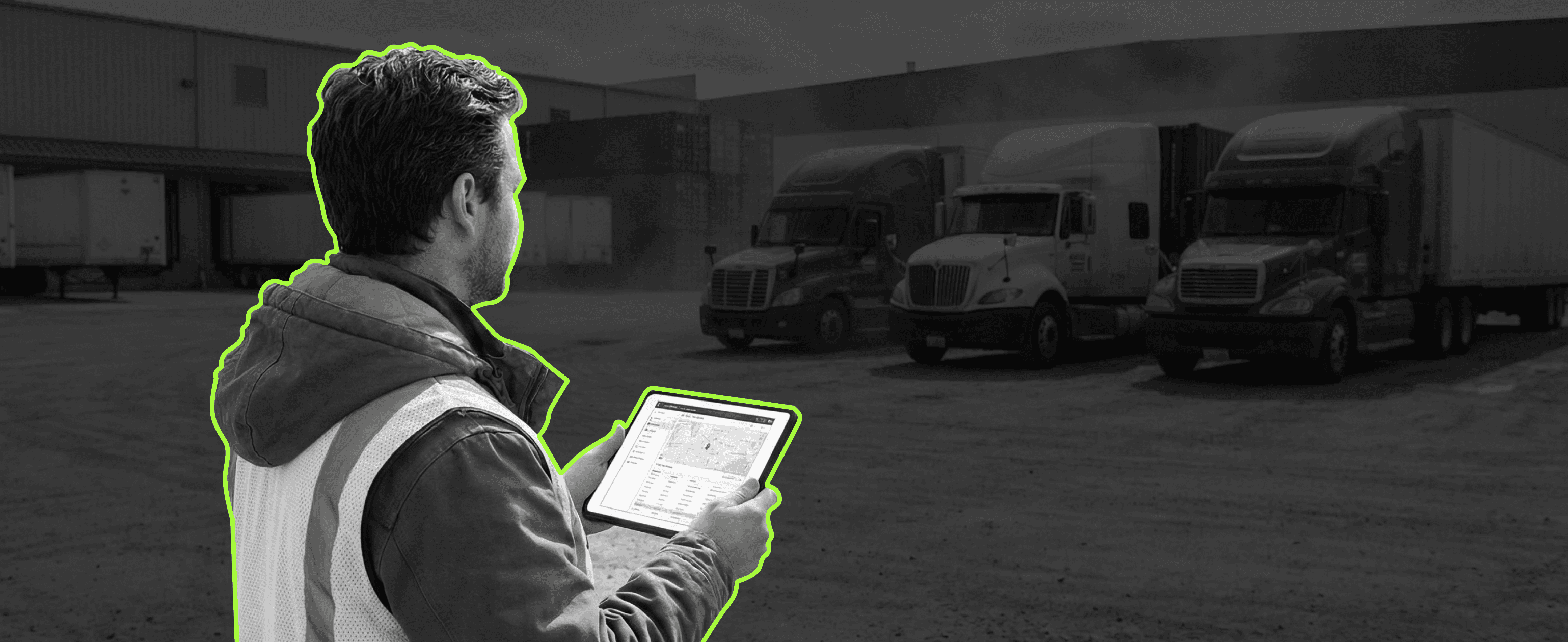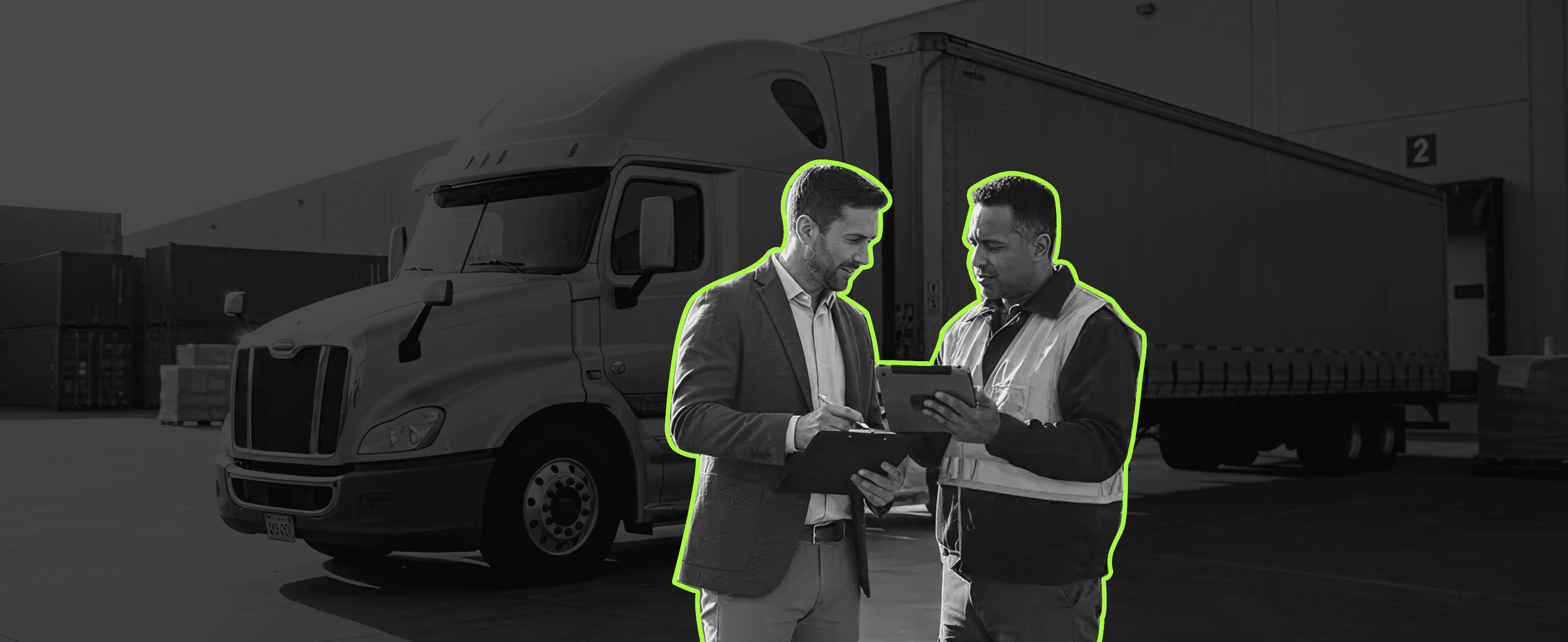May 7, 2025
Scroll to explore
Are your trucks sitting empty while loads go undelivered? Do you spend countless hours on the phone negotiating rates and tracking shipments? In today's hyper-competitive logistics landscape, every minute and dollar counts. Load boards have long been the go-to solution for connecting freight with carriers, but savvy logistics professionals are discovering these digital marketplaces are no longer delivering the efficiency modern supply chains demand.
The concept seems perfect on paper: a digital platform where shippers post available freight and carriers find loads to haul. With over $800 billion spent annually on trucking services in the United States alone, load boards process billions in freight transactions. Yet behind these impressive numbers lies a fragmented process plagued with inefficiencies, hidden costs, and technological limitations that are costing your business money and time.
Imagine a world where you could eliminate broker markups completely. Where you'd have real-time visibility into every shipment without making a single phone call. Where compliance concerns and cargo theft were dramatically reduced through sophisticated verification systems. The good news? This isn't some distant future state - it's the reality being created by next-generation logistics platforms that are transforming how freight moves across the country.
It's time to evaluate whether traditional load boards are truly meeting your modern logistics needs or merely providing a digital bandage for deeper systemic issues. As we explore what load boards are, how they work, and why they're falling short, you'll discover what forward-thinking logistics professionals are doing instead to drive real efficiency, control costs, and create competitive advantage in their supply chains.
What is a Load Board?
A load board is an The online marketplace for logistics has evolved to include specialized freight boards that cater to various needs. where shippers and freight brokers post loads that need to be transported, and carriers search for available loads to haul. This digital platform serves as a meeting point for those with freight to move and those with trucks ready to move it.
For decades, load boards have been the go-to solution for connecting carriers with available loads and helping brokers find trucks to move their freight. From small owner-operators to large trucking companies, these platforms have provided a way to keep trucks loaded and moving.
How to Use a Load Board
Using a load board typically follows a straightforward process:
Create an account and complete verification
Browse available loads or post your truck's availability
Filter searches based on route, equipment type, and rate
Contact the shipper or broker about specific load details
Negotiate terms and book the load
Both carriers and brokers use load boards to connect and facilitate freight movement, allowing them to book loads more efficiently. Carriers can search for loads that work with their current location and preferred routes, while brokers can post loads and search for available trucks to move their customers' freight.
Types of Load Boards
Different types of load boards serve various segments of the trucking industry:
Public Load Boards
These are open platforms where any verified carrier can search for loads. DAT and other popular load boards fall into this category, offering access to a wide range of available loads across the country.
Private Load Boards
Many freight brokers maintain their own load boards exclusively for their network of trusted carriers. These platforms often feature loads that aren't advertised on public boards, but a freight load board can help you find hidden opportunities.
Free vs. Paid Load Boards
While free load boards provide basic functionality, paid options typically offer more features, better load quality, and advanced search tools to help carriers find the best loads for their operations.
Benefits of Using Load Boards
Load boards provide several advantages that have made them staples in the trucking industry:
Quick access to available loads
Ability to find freight in specific regions
Tools to compare rates and find the best opportunities
Options to fill empty trucks and reduce deadhead miles
Access to a wide network of shippers and freight brokers
Load boards help carriers maintain steady work and assist brokers in finding reliable transportation for their customers' shipments. Many load boards also offer additional features like payment history, days-to-pay information, and carrier reviews.
Why Load Boards Aren't Enough Anymore
Despite their popularity, load boards have significant limitations in today's complex logistics landscape:
Persistent Inefficiencies
Load boards simply connect parties—they don't address the fundamental inefficiencies in the logistics process. After finding a load on a board, there's still substantial manual work involved:
Phone calls and emails to negotiate rates
Paperwork processing
Appointment scheduling
Load tracking and status updates can be enhanced with a mobile app for real-time notifications.
Payment processing
A logistics manager might find a carrier through a load board, but they're still responsible for managing every step of the shipment process manually.
Broker Markups
When using traditional load boards, shipments typically go through brokers who add markup fees that increase costs for shippers and reduce margins for carriers. This middleman layer adds expenses without necessarily adding proportional value.
Limited Visibility
Once a load is booked through a load board, shippers often have limited real-time visibility into their shipment's status. This lack of transparency can lead to:
Uncertainty about delivery times
Difficulty planning warehouse operations
Challenges communicating delays to customers
Reactive rather than proactive problem-solving
Security Concerns
Load boards typically provide limited carrier vetting, which can expose shippers to risks like cargo theft, insurance gaps, or service failures. For high-value or time-sensitive shipments, this level of security may be inadequate.
What Modern Logistics Needs Instead

Today's supply chain professionals require more comprehensive solutions that address the entire logistics process, not just the initial connection between shipper and carrier.
Direct Connections
Modern solutions are eliminating unnecessary middlemen by enabling shippers to connect directly with reputable haulers. This direct connection leads to:
Reduced costs through elimination of broker markups
Clearer communication between parties
More transparent pricing
Stronger relationships between shippers and carriers
Advanced Compliance and Security
To address cargo theft and service reliability concerns, next-generation platforms implement multiple layers of carrier compliance verification. These include:
Insurance verification and monitoring
Operating authority checks
Safety record reviews
Performance history tracking
Direct driver communication
Real-Time Visibility
Today's logistics operations demand complete transparency throughout the shipping process. Modern solutions offer:
GPS-enabled truck tracking
Direct in-cabin communication with drivers
Automated alerts for delays or exceptions
Predictive ETAs based on current conditions
Automation of Manual Processes
The future of logistics is moving away from manual data entry and towards automation:
API and EDI integration with existing systems
Smart BOLs that can't be manually manipulated
Automated appointment scheduling
Instant quoting and booking
Digital document management
Grow Your Business Beyond Load Boards
For logistics managers, operations directors, and supply chain analysts, the limitations of traditional load boards are becoming increasingly apparent. While load boards still serve a purpose for finding one-off loads or occasional capacity, building a resilient supply chain requires more robust solutions.
Forward-thinking companies are implementing integrated platforms that combine the matching functionality of load boards with complete shipment management capabilities. These comprehensive solutions enable businesses to:
Reduce overall transportation costs
Improve planning and decision-making
Enhance customer service through better delivery reliability
Minimize manual workloads for logistics teams
Build stronger relationships with quality carriers
The Next Load: Looking Forward
The trucking industry continues to evolve beyond basic freight matching. The next generation of logistics solutions focuses on creating ecosystems where every load is managed efficiently from quote to delivery.
Whether you're a shipper looking to streamline operations or a carrier wanting to maximize earnings, it's worth considering whether traditional load boards are still meeting your needs. As technology advances, the gap between basic load boards and comprehensive logistics platforms will only continue to widen.
The most successful logistics professionals understand that while load boards were revolutionary in their time, today's complex supply chains demand more sophisticated tools. By embracing comprehensive logistics solutions, companies can address the fundamental inefficiencies that load boards leave unresolved.
For businesses serious about optimizing their supply chain, the question isn't just how to use a load board—it's how to move beyond them to create truly efficient logistics operations.
Checkout other blogs

Stay ahead of the supply chain.
Break free from costly and complex systems. Sign up with HaulerHub now and make shipping a breeze.




